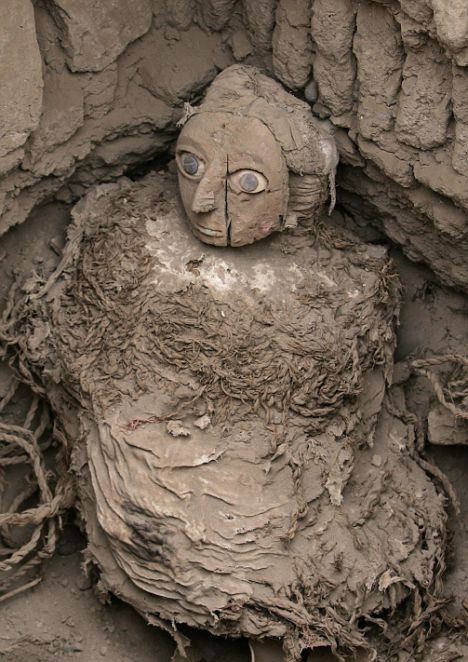Reconstruyendo la historia de las etnias andinas
Estudios paleogenómicos revelan la historia de migraciones mileniales a lo largo de las cordilleras
Un artículo publicado recientemente en la prestigiosa revista científica Cell hace una reconstrucción paleogenómica de las poblaciones históricas de los Andes, la cual nos sirve para entender los orígenes y movimientos étnicos durante los últimos 9.000 años.

Existen aún muchas interrogantes sobre la historia de las poblaciones andinas, particularmente con respecto al impacto de las grandes culturas Moche, Wari, Tiahuanaco e Inca. Un consorcio internacional de investigadores, del cual formó parte el Profesor Ricardo Fujita de la UNSMP y miembro de PeruBiotec, recolectó datos genómicos de 89 individuos que datan de hace 9,000 a 500 años (AP), el cual coincide con el ascenso y la caída de las mayores sociedades estatales que existieron en la región. Los resultados muestran que la estructura genética actual comenzó a desarrollarse por hace unos 5.800 años, seguida por un flujo bidireccional de genes entre el norte y el Sur, y entre las cordilleras y la costa. Aunque entre hace 2000 y 500 años se detectó un nivel mínimo de mezcla entre grupos vecinos, sí se detectó cosmopolitismo, es decir la presencia de personas de diversos orígenes viviendo juntas en los centros políticos de las culturas Tiahuanaco e Inca así como casos de movilidad de largo alcance que conectan los Andes con Argentina y así como con la cuenca del Amazonas.
El artículo lleva el título “A Paleogenomic Reconstruction of the Deep Population History of the Andes” (presione el enlace para acceder al artículo original).
Megaproyecto entomológico
Una ambiciosa iniciativa se ha puesto por tarea secuenciar los genomas de 5000 especies de insectos, lo que entre otras cosas nos ayudará a desarrollar nuevos pesticidas específicos, entender cómo se transmiten ciertas enfermedades, pero también cómo proteger a los insectos benéficos. Ver comunicado der la Sociedad Entomológica Americana abajo.
Entomologists Launch 5,000 Insect Genome Project (i5k)
From the Entomological Society of America
Lanham, MD; June 15, 2011 – It’s been called “the Manhattan Project of Entomology,” an undertaking that has the potential to revolutionize the way we think about insects.
The i5k Initiative, also known as the 5,000 Insect Genome Project, was recently launched with a letter to Science from ten signers known as the i5k Ad Hoc Launch Group. Now the latest issue of American Entomologist features an interview with four of the signers about the project's origins, purpose, and goals.
The Initiative aims to sequence the genomes of 5,000 insects and other arthropods over the next five years in order to “improve our lives by contributing to a better understanding of insect biology and transforming our ability to manage arthropods that threaten our health, food supply, and economic security.”
"We hope that generating this data will lead to better models for insecticide resistance, better models for developing new pesticides, better models for understanding transmission of disease, or for control of agricultural pests," said Daniel Lawson, a coordinator at the European Bioinformatics Institute. "Moving into the genetics era revolutionizes what you can do, what you can try to assay in your species, what you can infer from your experiments."
According to Gene E. Robinson, a professor at the University of Illinois at Urbana-Champaign, "This will provide information that breeders would need to look for ways of dealing with insect resistance to pesticides. It would also provide geneticists with information on what might be vulnerable points in an insect's makeup, which could be used for novel control strategies."
As the costs of genomic sequencing continue to fall due to technological improvements, it will soon become feasible to cheaply sequence the genomes of 5,000 insects of medical and agricultural importance, and then to mine the genomes for data which could lead to better insect control and management products and techniques.
"For example, we could mine data for cytochrome p450 detox genes. Those genes are involved with detoxifying chemicals that are inside insects, so if we know about those genes from one insect to another, we can use that information to actually kill the insects," said Kevin J. Hackett, a national program leader at the USDA Agricultural Research Service. "Or if you take beneficial insects like honey bees, which do not have as many detoxifying genes and are more susceptible to chemicals, that kind of information could be used to help protect bees."
The leaders of the i5k Initiative invite entomologists around the world to sign up and to create wiki pages at http://arthropodgenomes.org/wiki/i5K in order to recommend which insect genomes should be sequenced in the future, report which insect genomes are already being sequenced, and to start conversations with other scientists who are working on similar projects.
"We're trying to find out who's working on what insects, and if they feel that having genomic information about their insects would help," said Susan J. Brown, a professor at Kansas State University. "Quite a few researchers are probably working on transcriptomics, looking at the genes that are transcribed under certain contexts, environmental conditions or life stages. Looking at the whole genome will help us understand these comparatively and not just in one organism."
"We want this to be a broad-based, inclusive effort," said Dr. Robinson. "We want all people to be involved, we want all insects of agricultural importance, all insects of medical importance, and so forth. Workshops will be organized and held, and there will be opportunities for further input, interactions, and the ability to shape the project."
To find out more, read the interview in American Entomologist at http://entsoc.org/PDF/2011/AE-15k.pdf, and to participate, visit the i5k wiki website at http://arthropodgenomes.org/wiki/i5K.
American Entomologist (http://entsoc.org/Pubs/Periodicals/AE) is a quarterly magazine published by the Entomological Society of America (ESA). Founded in 1889, ESA is a non-profit organization committed to serving the scientific and professional needs of more than 6,000 entomologists and individuals in related disciplines.
Página en construcción


